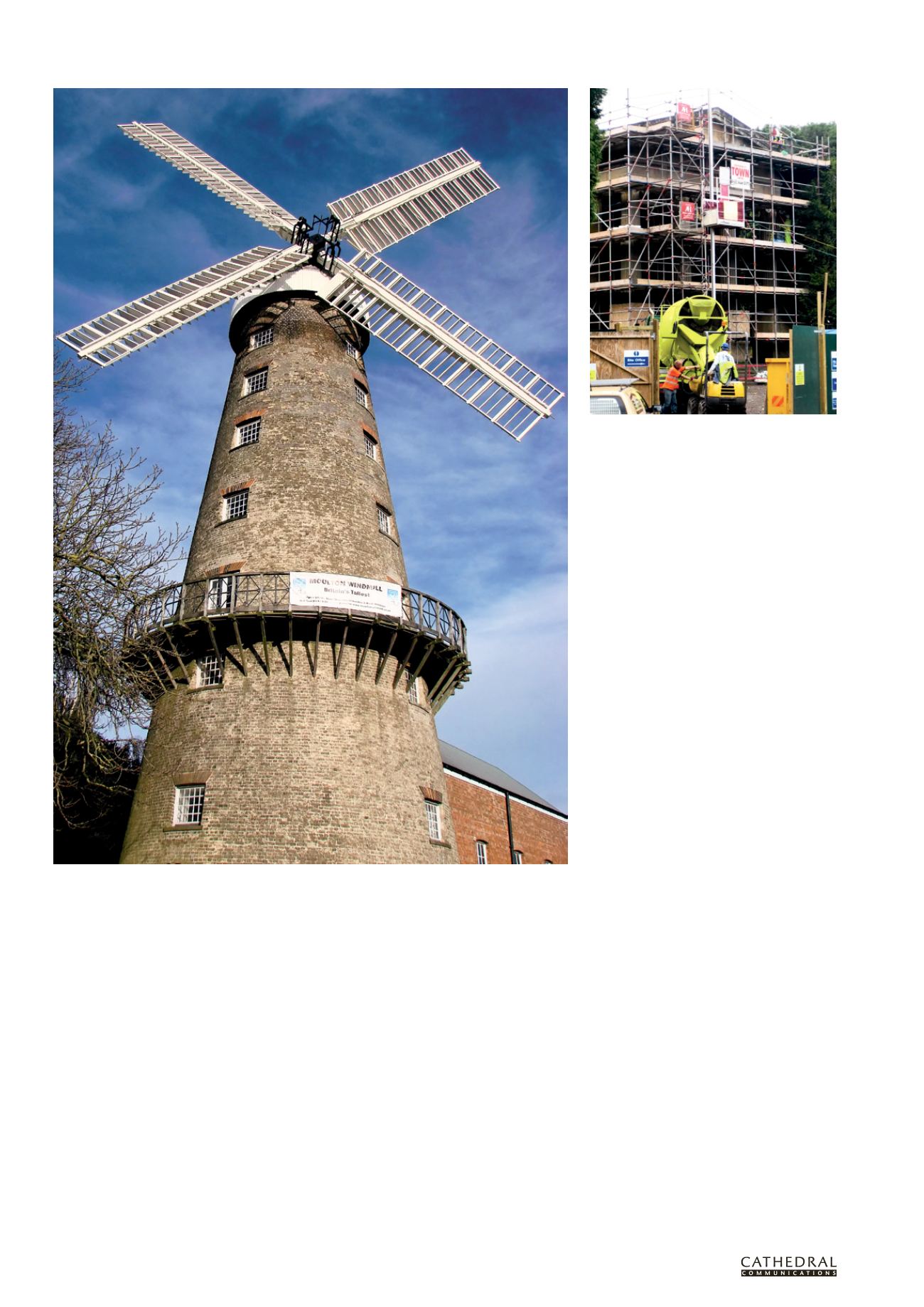
1 8 4
T H E B U I L D I N G C O N S E R VAT I O N D I R E C T O R Y 2 0 1 4
T W E N T Y F I R S T E D I T I O N
USEFUL INFORMATION
6
Ten years on, it is quite encouraging
to look back at those buildings, including
Mavisbank, which featured in the first series
of the BBC’s Restoration in the late summer
of 2003. Of the 30 buildings included in the
series, many have been fully or partially
restored, having undoubtedly benefitted
from the high profile such coverage brings.
Moulton Windmill in Lincolnshire is one
such, now with its sails refitted and opening
to the public on a regular basis. Lissan
House in Northern Ireland, the runner-up to
Manchester’s Victoria Baths, is also thriving,
repaired and in use for a wide variety of events
and activities. Considerable progress has also
been made by the likes of Cromford Mills
in Derbyshire, Llanelly House in Wales and
Arnos Vale Cemetery in Bristol.
Others, however, tell a less palatable
story, and one which perhaps sums up the
challenges facing buildings at risk in the UK
in the 21st century. Glen O’Dee Hospital in
Scotland, despite the efforts of a consortium
of third sector bodies, was sold by the NHS to
a developer and it lies abandoned and derelict,
with some of the historic structure already
demolished. At the other end of the British
Isles, the Poltimore House Trust in Exeter has
had to overcome the unexpected discovery
of asbestos, further deterioration of the main
house and a number of funding setbacks and
yet, with the support of the AHF and others,
the trust continues its valiant efforts to save
this extraordinary building.
A similar story can be told in almost
every community in the UK – local people
working together to try to save a much-loved
historic building. We are seeing more cases
where groups are taking advantage of the asset
transfer and community rights legislation
from the Localism Act 2011, to stop significant
buildings being sold for private development
and instead retain them for community use.
The campaigners trying to keep the Ivy House
in Nunhead, South London as a pub, were the
first successfully to use the legislation, and,
with the help of funding from the AHF and
the Social Investment Business, bought the
building using the Community Right to Bid
provision. The building re-opened in August
2013 as a thriving community-owned business.
This may well be the shape of future
projects to rescue buildings at risk – where the
emphasis is on the use of the building rather
than its heritage and historic importance.
Whichever approach is taken, what is certain
is that community groups, third sector
organisations, private and commercial owners,
local authorities and the government in all
four home nations need to work together to
find imaginative and sustainable solutions
for these buildings at the heart of our
communities, so that in years to come the
numbers on those risk registers start to come
down significantly.
Further Information
Contact details for all the main conservation
organisations can be found in the Useful
Contactss section (page 195) and on
, where
you can also read hundreds of articles on
conservation issues.
The Architectural Heritage Fund
Funds for Historic Buildings
Heritage Help
The Heritage Lottery Fund
IAN LUSH
is chief executive of the
.
Moulton Windmill, Lincolnshire: the nine-storey mill opened to the public in 2005 following a restoration
programme led by the Moulton Windmill Project, a collaboration between local volunteers and the
Lincolnshire Mills Group.
Restoration work under way at the neo-classical
non-conformist chapel, Arnos Vale Cemetery, Bristol


